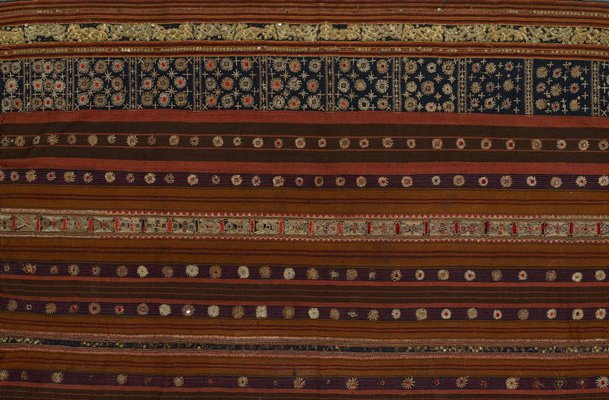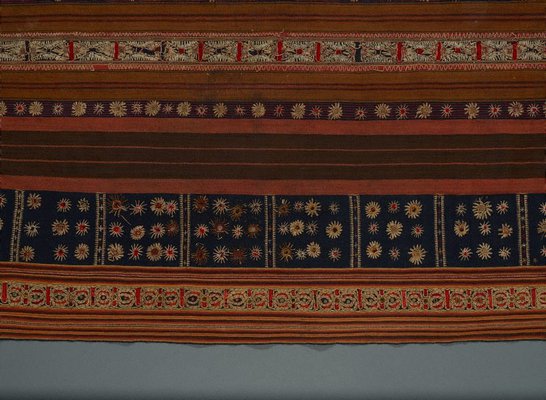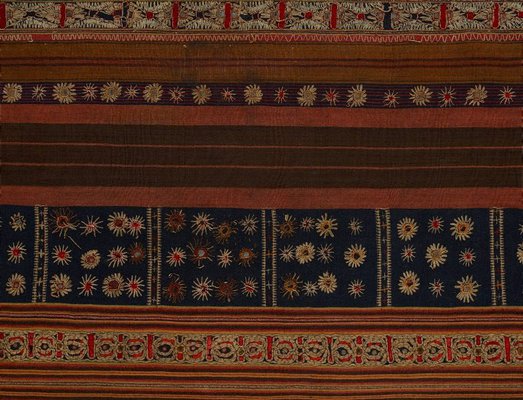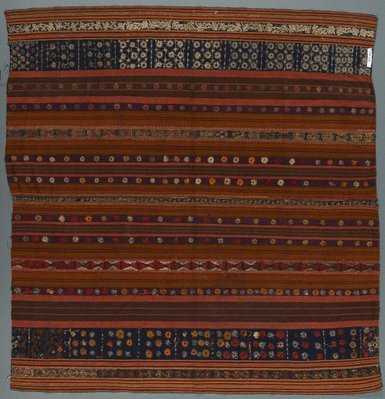





-
Details
- Place where the work was made
-
Lampung
→
Sumatra
→
Indonesia
- Cultural origin
- Abung coastal people
- Date
- circa 1900
- Media category
- Textile
- Materials used
- silk and cotton or bast fibres, wool, sequins, gold and silver wrapped thread, mica, and paper-card, and natural dyes
- Dimensions
- 114 x 110 cm
- Credit
- Gift of Drusilla Megget 2011
- Location
- Not on display
- Accession number
- 388.2011
- Copyright
- Share
-
-
About
This is a Tapis Kaca or Mirror Tapis. It is composed of silk and cotton or bast fibres, wool, sequins, gold- and silver-wrapped thread, mica, and paper-card, and dyed with natural dyes. The decorative techniques include embroidery, particularly straight stitch, couching and French knots, and appliqué. The tapis comprises two pieces of cloth joined together across the middle of the skirt. The cloth is warp-faced plain weave with brown weft threads and multi-coloured warp threads, including brown, light and dark ochre, green, madder red, and red. The skirt is decorated with designs of gold- and silver-wrapped thread, sequins, and appliquéd mirrors and woven pieces of red wool. The gold-wrapped threadwork coiled around yarns are arranged into patterns and couched (cucuk) onto paper-card bases attached to the base cloth. The patterns created by the couching threads are called sasab. The extensive use of gold-wrapped thread is common on tapis skirts. The embroidery yarns are left undyed or are brown, pinkish-red, and dark yellow. The stripes, geometric forms, and star and flower patterns are standard for this type of tapis. Similar pieces come from people following the Pepadon tradition, one of the two main social groups, in central and north Lampung. The dark hues further indicate that the piece is from northern Lampung.
